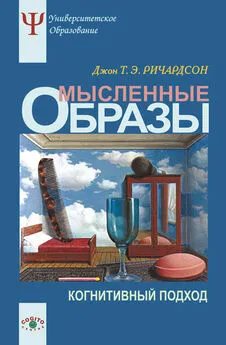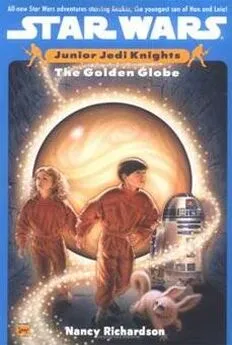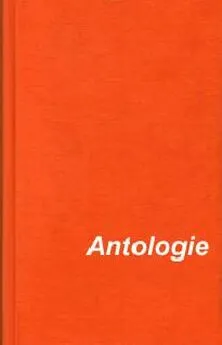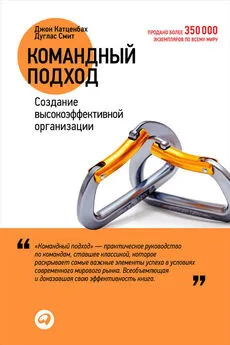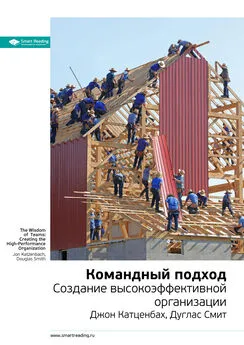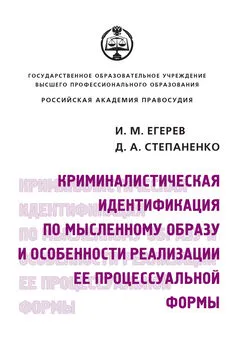Джон Ричардсон - Мысленные образы. Когнитивный подход
- Название:Мысленные образы. Когнитивный подход
- Автор:
- Жанр:
- Издательство:Литагент «Когито-Центр»881f530e-013a-102c-99a2-0288a49f2f10
- Год:2006
- Город:Москва
- ISBN:5-89353-187-6, 0-86377-843-7
- Рейтинг:
- Избранное:Добавить в избранное
-
Отзывы:
-
Ваша оценка:
Джон Ричардсон - Мысленные образы. Когнитивный подход краткое содержание
Учебное пособие написано с позиций когнитивного подхода и посвящено проблеме ментальных, или мысленных образов. Кратко, но систематично и на современном уровне освещаются разные аспекты психологии образов: переживание образов, образная репрезентация, образность той или иной стимуляции, образ как способ организации деятельности. Значительное внимание уделено методам исследования и диагностики образной сферы человека, а также мозговым механизмам, связанным со способностью к генерации образов.
Данное пособие в значительной степени восполняет пробел в доступной отечественному читателю психологической литературе и будет полезна не только психологам – студентам, аспирантам и научным работникам, – но также и всем тем, кого интересуют механизмы и закономерности познавательной деятельности человека.
Мысленные образы. Когнитивный подход - читать онлайн бесплатно ознакомительный отрывок
Интервал:
Закладка:
Paivio, A. (1975b). Perceptual comparisons through the mind’s eye. Memory and Cognition, 3, 635–647.
Paivio, A. (1978a). Comparisons of mental clocks. Journal of Experimental Psychology: Human Perception and Performance, 4, 61–71.
Paivio, A. (1978b). Dual coding: Theoretical issues and empirical evidence. In J.M. Scandura & C.J. Brainerd (Eds), Structural/process models of complex human behavior (pp. 527–549). Alphen aan den Rijn: Sijthoff & Noordhoff.
Paivio, A. (1978c). Mental comparisons involving abstract attributes. Memory and Cognition, 6, 199–208.
Paivio, A. (1978d). The relationship between verbal and perceptual codes. In E.C. Carterette & M.P. Friedman (Eds), Handbook of perception: Vol. VIII. Perceptual coding (pp. 375–397). New York: Academic Press.
Paivio, A. (1986). Mental representations: A dual coding approach. New York: Oxford University Press.
Paivio, A., & Clark, J.M. (1991). Static versus dynamic imagery. In C. Cornoldi & M.A. McDaniel (Eds), Imagery and cognition (pp. 221–245). New York: Springer-Verlag.
Paivio, A., & Foth, D. (1970). Imaginal and verbal mediators and noun concreteness in paired-associate learning: The elusive interaction. Journal of Verbal Learning and Verbal Behavior, 9, 384–390.
Paivio, A., & Harshman, R.A. (1983). Factor analysis of a questionnaire on imagery and verbal habits and skills. Canadian Journal of Psychology, 37, 461–483.
Paivio, A., & Yuille, J.C. (1967). Mediation instructions and word attributes in paired-associate learning. Psychonomic Science, 8, 65–66.
Paivio, A., & Yuille, J.C. (1969). Changes in associative strategies and paired-associate learning over trials as a function of word imagery and type of learning set. Journal of Experimental Psychology, 79, 458–463.
Paivio, A., Yuille, J.C, & Madigan, S.A. (1968).
Concreteness, imagery, and meaningfulness values for 925 nouns. Journal of Experimental Psychology Monographs, 76(1, Pt. 2).
Paivio, A., Yuille, J.C, & Smythe, P.C (1966).
Stimulus and response abstractness, imagery, and meaningfulness, and reported mediators in paired-associate learning. Canadian Journal of Psychology, 20, 362–377.
Parkin, A.J. (1984). Amnesic syndrome: A lesion-specific disorder? Cortex, 20, 479–508.
Parkin, A.J., & Leng, N.R.C (1993). Neuropsychology of the amnesic syndrome. Hove, UK: Lawrence Erlbaum Associates Ltd.
Parrott, C.A. (1986). Validation report on the Verbalizer-Visualizer Questionnaire. Journal of Mental Imagery, 10(4), 39–42.
Patten, B.M. (1972). The ancient art of memory: Usefulness in treatment. Archives of Neurology, 26, 25–31.
Penfield, W. (1968). Engrams in the human brain. Proceedings of the Royal Society of Medicine, 61, 831–840.
Penfield, W., & Perot, P. (1963). The brain’s record of auditory and visual experience: A final summary and discussion. Brain, 86, 595–696.
Perrig, W.J. (1986). Imagery and the thematic storage of prose. In D.G. Russell, D.F. Marks, & J.T.E. Richardson (Eds), Imagery 2: Proceedings of the 2nd International Imagery Conference (pp. 77–82). Dunedin: Human Performance Associates.
Peterson, M.A., Kihlstrom, J.F., Rose, P.M., & Glisky, M.L. (1992). Mental images can be ambiguous: Reconstruals and reference-frame reversals. Memory and Cognition, 20, 107–123.
Petrides, M., & Milner, B. (1982). Deficits on subject-ordered tasks after frontal-and temporal-lobe lesions in man. Neuropsychologia, 20, 249–262.
Pinker, S., & Kosslyn, S.M. (1978). The representation and manipulation of three-dimensional space in mental images. Journal of Mental Imagery, 2, 69–83.
Poltrock, S.E., & Brown, P. (1984). Individual differences in visual imagery and spatial ability. Intelligence, 8, 93—138.
Prigatano, G.P., Fordyce, D.J., Zeiner, H.K., Roueche, J.R., Pepping, M., & Wood, B.C. (1986). Neuropsychological rehabilitation after brain injury. Baltimore, MD: Johns Hopkins University Press.
Pylyshyn, Z.W. (1973). What the mind’s eye tells the mind’s brain: A critique of mental imagery. Psychological Bulletin, 80, 1—24.
Quinn, J.G., & McConnell, J. (1996). Irrelevant pictures in visual working memory. Quarterly Journal of Experimental Psychology, 49A, 200–215.
Quinton, A.M. (1973). The nature of things. London: Routledge & Kegan Paul.
Ratcliff, G. (1979). Spatial thought, mental rotation, and the right cerebral hemisphere. Neuropsychologin, 17, 49–54.
Reed, H.B. (1918). Associative aids: I. Their relation to learning, retention, and other associations. Psychological Review, 25, 128–155.
Reisberg, D., Culver, L.C., Heuer, F., & Fischman, D. (1986). Visual memory: When imagery vividness makes a difference. Journal of Mental Imagery, 10(4), 51–74.
Reisberg, D., & Leak, S. (1987). Visual imagery and memory for appearance: Does Clark Gable or George C. Scott have bushier eyebrows? Canadian Journal of Psychology, 41, 521–526.
Richardson, A. (1969). Mental imagery. London: Routledge & Kegan Paul.
Richardson, A. (1977a). The meaning and measurement of memory imagery. British Journal of Psychology, 68, 29–43.
Richardson, A. (1977b). Verbalizer-visualizer: A cognitive style dimension. Journal of Mental Imagery, 1, 109–125.
Richardson, A. (1978). Subject, task, and tester variables associated with initial eye movement responses. Journal of Mental Imagery, 2, 85–99.
Richardson, A. (1994). Individual differences in imaging: Their measurement, origins, and consequences. Amityville, NY: Baywood Publishing.
Richardson, J.T.E. (1975a). Concreteness and imageability. Quarterly Journal of Experimental Psychology, 27, 235–249.
Richardson, J.T.E. (1975b). Imagery and deep structure in the recall of English nominaliza-tions. British Journal of Psychology, 66, 333–339.
Richardson, J.T.E. (1978a). Mental imagery and memory: Coding ability or coding preference? Journal of Mental Imagery, 2, 101–115.
Richardson, J.T.E. (1978b). Reported mediators and individual differences in mental imagery. Memory and Cognition, 6, 376–378.
Richardson, J.T.E. (1979a). Correlations between imagery and memory across stimuli and across subjects. Bulletin of the Psychonomic Society, 14, 368–370.
Richardson, J.T.E. (1979b). Mental imagery, human memory, and the effects of closed head injury. British Journal of Social and Clinical Psychology, 18, 319–327.
Richardson, J.T.E. (1979c). Subjects’ reports in mental comparisons. Bulletin of the Psychonomic Society, 14, 371–372.
Richardson, J.T.E. (1980a). Concreteness, imagery, and semantic categorization. Journal of Mental Imagery, 4, 51–58.
Richardson, J.T.E. (1980b). Mental imagery and human memory. London: Macmillan. Richardson, J.T.E. (1980c). Mental imagery and stimulus concreteness. Journal of Mental Imagery, 4, 87–97.
Richardson, J.T.E. (1984). The effects of closed head injury upon intrusions and confusions in free recall. Cortex, 20, 413–420.
Richardson, J.T.E. (1985). Integration versus decomposition in the retention of complex ideas. Memory and Cognition, 13, 112–127.
Richardson, J.T.E. (1987). Social class limitations on the efficacy of imagery mnemonic instructions. British Journal of Psychology, 78, 65–77.
Richardson, J.T.E. (1989). Performance in free recall following rupture and repair of intracranial aneurysm. Brain and Cognition, 9, 210–226.
Richardson, J.T.E. (1990). Clinical and neuropsychological aspects of closed head injury. London: Taylor & Francis.
Richardson, J.T.E. (1991). Gender differences in imagery, cognition, and memory. In R.H. Logie & M. Denis (Eds), Mental images in human cognition (pp. 271–303). Amsterdam: Elsevier.
Richardson, J.T.E. (1995a). The efficacy of imagery mnemonics in memory remediation. Neuropsychologia, 33, 1345–1357.
Richardson, J.T.E. (1995b). Gender differences in the Vividness of Visual Imagery Questionnaire: A meta-analysis. Journal of Mental Imagery, 19(3 & 4), 177–187.
Richardson, J.T.E., & Barry, С (1985). The effects of minor closed head injury upon human memory: Further evidence on the role of mental imagery. Cognitive Neuropsychology, 2, 149–168.
Richardson, J.T.E., Cermak, L.S., Blackford, S.P., & O’Connor, M. (1987). The efficacy of imagery mnemonics following brain damage. In M.A. McDaniel & M. Pressley (Eds), Imagined and related mnemonic processes: Theories, individual differences and applications (pp. 303–328). New York: Springer-Verlag.
Richardson, J.T.E., & Rossan, S. (1994). Age limitations on the efficacy of imagery mnemonic instructions. Journal of Mental Imagery, 18, 151–164.
Richardson, J.T.E., & Snape, W. (1984). The effects of closed head injury upon human memory: An experimental analysis. Cognitive Neuropsychology, 1, 213–231.
Robertson, I.H., Halligan, P.W., & Marshall, J.C. (1993). Prospects for the rehabilitation of unilateral neglect. In I.H. Robertson & J.C. Marshall (Eds), Unilateral neglect: Clinical and experimental studies (pp. 279–292). Hove, UK: Lawrence Erlbaum Associates Ltd.
Rohwer, W.D., Jr. (1966). Constraint, syntax and meaning in paired-associate learning. Journal of Verbal Learning and Verbal Behavior, 5, 541–547.
Rohwer, W.D., Jr. (1973). Elaboration and learning in childhood and adolescence. In H.W. Reese (Ed.), Advances in child development and behavior (Vol. 8, pp. 1-57). New York: Academic Press.
Roland, P.E., & Friberg, L. (1985). Localization of cortical areas activated by thinking. Journal of Neurophysiology, 53, 1219–1243.
Rollins, M. (1989). Mental imagery: On the limits of cognitive science. New Haven, CT: Yale University Press.
Rosenthal, R. (1966). Experimenter effects in behavioral research. New York: Appleton-Century-Crofts.
Runquist, W.N., & Farley, F.H. (1964). The use of mediators in the learning of verbal paired associates. Journal of Verbal Learning and Verbal Behavior, 3, 280–285.
Segal, S.J. (1971). Processing of the stimulus in imagery and perception. In S.J. Segal (Ed.), Imagery: Current cognitive approaches (pp. 69-100). New York: Academic Press. Sergent, J. (1990). The neuropsychology of visual image generation: Data, method, and theory. Brain and Cognition, 13, 98—129.
Sheehan, P.W. (1966). Functional similarity of imaging to perceiving: Individual differences in vividness of imagery. Perceptual and Motor Skills, 23, 1011–1033.
Sheehan, P.W. (1967a). A shortened form of the Betts’ Questionnaire Upon Mental Imagery. Journal of Clinical Psychology, 23386-389.
Sheehan, P.W. (1967b). Visual imagery and the organizational properties of perceived stimuli. British Journal of Psychology, 58, 247–252.
Sheehan, P.W. (1972). A functional analysis of the role of visual imagery in unexpected recall. In P.W. Sheehan (Ed.), The function and nature of imagery (pp. 149–174). New York: Academic Press.
Sheehan, P.W., & Neisser, U. (1969). Some variables affecting the vividness of imagery in recall. British Journal of Psychology, 60, 71–80.
Sheikh, A.A. (1977). Mental images: Ghosts of sensations? Journal of Mental Imagery, 1, 1–4.
Читать дальшеИнтервал:
Закладка:
